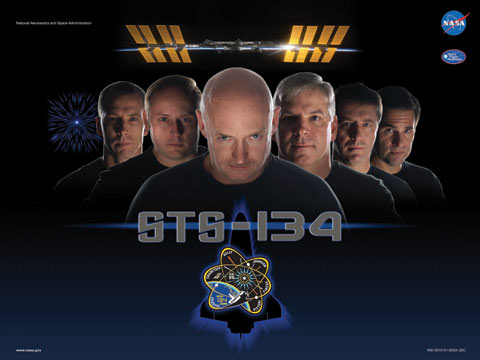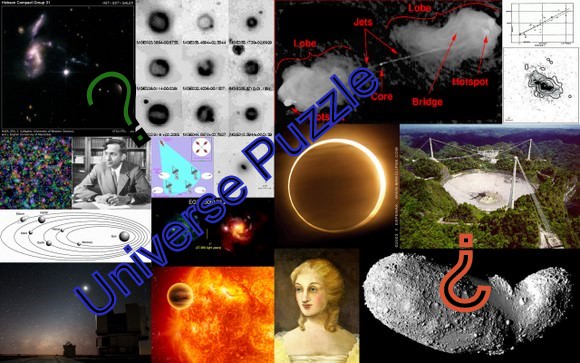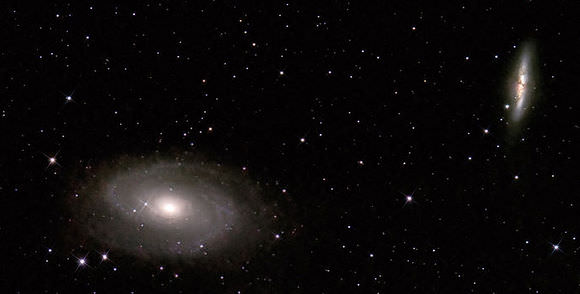Researchers in Antarctica got a surprise visit from a creature in a borehole 185 meters (600 feet) below the Antarctic ice, where there is usually no light. A Lyssianasid amphipod, a shrimp-like creature can be seen swimming in this video. A NASA team had lowered a small video camera to get the first-ever photograph of the underside of an ice shelf when the curious little 7 cm (3- inch) shrimp stopped by to check out the equipment. Scientists say this could challenge the idea of where and how forms of life can survive. Anyone else thinking Europa?
Continue reading “Unexpected Life Found Under Antarctic Ice”
Snowy Soyuz Touchdown!
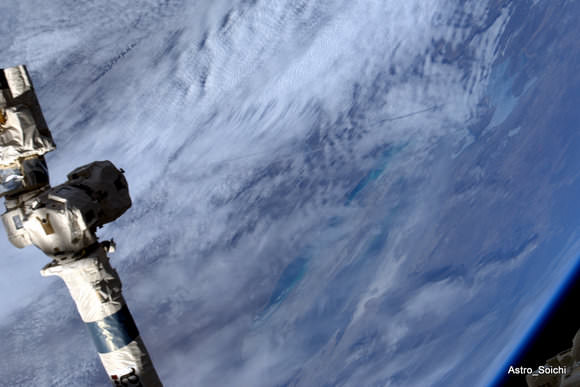
[/caption]
In what was likely a softer –albeit colder — Soyuz landing than usual, ISS Expedition 22 astronaut Jeff Williams and cosmonaut Max Suraev landed their Soyuz TMA-16 spacecraft on the snowy steppes of Kazakhstan Thursday, wrapping up a five-and-a-half-month stay aboard the International Space Station. The entire process of undocking and re-entry of the Soyuz was captured by the newest and hottest space photographer, Soichi Noguchi, (@Astro_Soichi) who has been sending down amazing Twitpics from space. See his very unique images below.

Suraev was at the controls of the spacecraft as it undocked at 8:03 GMT (4:03 a.m. EDT) from the station’s Poisk module. The duo landed at 11:24 GMT (7:24 a.m. EDT) at a site northeast of the Kazakh town of Arkalyk. The recovery teams had to work in frigid temperatures to help the crew exit the Soyuz and readjust to gravity, and then transport them to the Gagarin Cosmonaut Training Center in Star City, outside of Moscow.
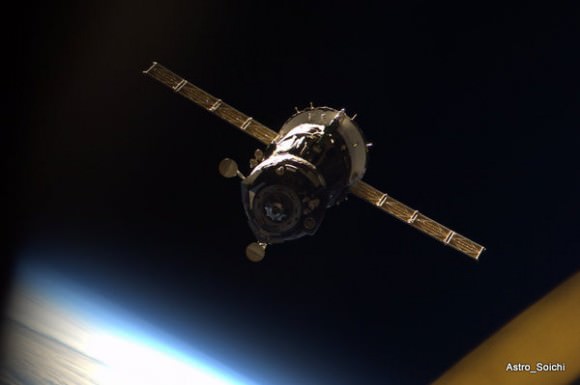
“Fly safe my friends!” wrote @Astro_Soichi.
See all of Noguchi’s photos at his Twitpic page.
ISS Change of Command as Russian American Crew readies Earth return
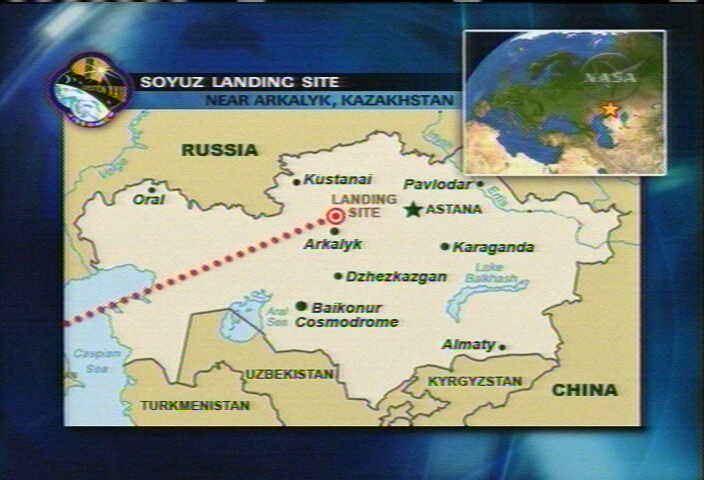
[/caption]
ISS Station Commander Jeff Williams, from NASA, handed over command of the massive orbiting outpost to Russian cosmonaut Oleg Kotev, in a formal ceremony early today (Wed, March 17) in preparation for the return to earth of two crew members early Thursday. The ISS population will be reduced to a crew of three until the scheduled April 4 arrival of the next three person station crew inside a Russian capsule. Both Williams and Kotev have previously served on the ISS for long duration missions.
This marks the end to Expedition 22 and the start of Expedition 23. The five person international crew of Expedition 22 comprised Commander Jeff Williams and Flight Engineers Maxim Suraev, Oleg Kotov, Soichi Noguchi, and T.J. Creamer.
“I would like to thank the crew here for supporting me and for actually being really autonomous. I mean, I didn’t have to do anything, everyone is a self starter here, everyone did a very good job in everything that came before us. Well beyond things that were asked,” Williams said. “It was amazing that we were about to accomplish everything planned.
Williams thanked Kotov by saying, “You came with a lot of experience, you made great contributions from end to end on the space station with your previous experience. And even through today, I continue to take your advice on things and learn new things from you. Thank you for that.
Kotov heaped praising upon Williams saying, You demonstrated excellent leadership and a good example, being an excellent commander. Thank you for leaving station in such excellent condition. We’ll try to follow your way and keep it in good shape. Thank you, Jeff, thank you, Max, and Godspeed.”
After bidding a final farewell this evening, they’ll float aboard their return vessel and close the hatches between the ships at about 11:40 PM EDT tonight. US astronaut Jeff Williams and Russian cosmonaut Maxim Sureav are scheduled to undock and depart aboard their Soyuz TMA-16 capsule at about 4 AM EDT. The first separation burn is set for 4:06 AM.
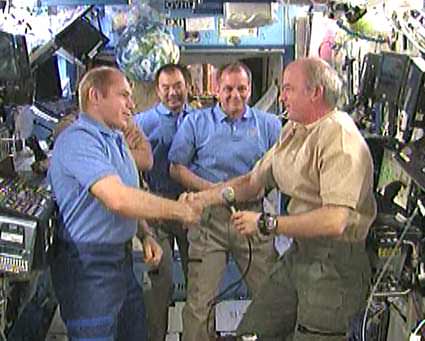
A four minute and 19 second de-orbit burn at 6:34 AM will send the craft on an irreversible course for the fiery plunge through the earth’s atmosphere. The heat shield will protect the two man crew from the scorching heat of reentry. They are set to land at 7:23 AM in the steppes of Kazakhstan.
With frigid weather around 20 F, ground snow and gusty winds predicted to greet Williams and Suraev at the landing site, Russian and NASA personnel are staying overnight in nearby Arkalyk to assure a swift recovery of the crew. Weather permitting, four additional helicopters will depart from Kustanai Thursday and refuel in Arkalyk en route to the landing site to assist with the recovery.
Williams and Sureav will have spent 169 days in space following their launch on Sep. 30, 2009 from the Baikonur Cosmodrome. For a brief interlude in December, they served as a skeleton crew of two following the departure of the three person Expedition 21 crew whom they replaced. On Dec 22, Santa’s helpers magically arrived in the form of Kotev, Creamer and Noguchi bearing a Christmas tree and gifts for Williams and Sureav for a festive holiday celebration of peace and good will.
The stations crew size will again increase to its maximum of six, when the next Soyuz blasts off on April 2 at 12:04 AM with a three person Russian/American crew composed of Commander Alexander Skvortsov, Mikhail Kornienko and Tracy Dyson aboard the Soyuz TMA-18 spacecraft.
Space Shuttle Discovery is currently set to lift off on April 5 from pad 39 A with a seven person crew and the ‘Leonardo’ Multi Purpose Logistics Module which is packed with living supplies, replacements parts and science experiments and gear. The two week assembly mission will feature three spacewalks and three female astronauts, including one from Japan.
After the planned retirement of the Space Shuttle later this year, all NASA astronauts will have only one choice to fly into space and reach the ISS. That will be on board the Russian Soyuz capsules at about $50 million per seat.
President Obama decided to completely terminate Project Constellation and cancel NASA’s Orion capsule which was NASA’s planned vehicle to replace the shuttle. Russia had previously charged about $20 to 30 million, but the price has skyrocketed as the looming end to NASA shuttle program rapidly approaches.
Over $9 Billion has been spent on Project Constellation since 2004. Tens of thousands of US jobs will be rapidly lost with the shuttle shutdown. The Obama Administration has instead decided to fund the development of “space taxis” by commercial providers to deliver astronauts to low Earth orbit, or LEO and the ISS. It is not known when these “taxis” will be flown and there is intense opposition to Obama’s plan from key members of the US Congress.
The undocking will be carried live on NASA TV
STS-134 Does Star Trek with New Poster
[/caption]
I love the crew posters that NASA has been creating lately, and this one is especially cool. If you are a Star Trek fan, you likely will recognize the pose that Commander Mark Kelly and his crew are assuming. If not, take a look below.

Find all the crew posters at the NASA Spaceflight Awareness product page. And try not to download too many! They’re all great.
Right now, STS-134 has a targeted launch date of July 29, 2010. But STS-131, -132 and -133 are in line first, and right now we’re waiting to hear word on whether Discovery for STS-131 will have to be rolled back off the launchpad to fix a faulty helium valve in the right Reaction Control System. Additionally, one of STS-134’s payloads is scheduled to be the $2-billion Alpha Magnetic Spectrometer, but possible design problems could delay the launch of this much-anticipated instrument which could help find antimatter and test the Big Bang theory. Stay tuned!
Spitzer Spies Earliest Black Holes
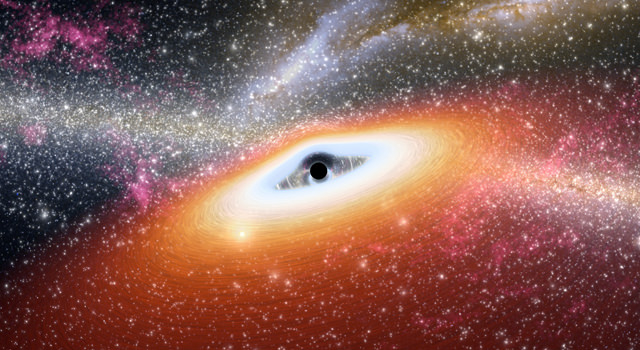
[/caption]
The Spitzer Space Telescope has found what appear to be two of the earliest and most primitive supermassive black holes known. “We have found what are likely first-generation quasars, born in a dust-free medium and at the earliest stages of evolution,” said Linhua Jiang of the University of Arizona, Tucson, lead author of a paper published this week in Nature.
A quasar is a compact region in the center of a massive galaxy surrounding the central supermassive black hole.
As shown by the image we posted earlier today from the Planck mission, our galaxy – and the Universe – is littered with dust. But scientists believe the very early universe didn’t have any dust — which tells them that the most primitive quasars should also be dust-free. But nobody had seen any “clean” quasars — until now.
Spitzer has identified two — the smallest on record — about 13 billion light-years away from Earth. The quasars, called J0005-0006 and J0303-0019, were first unveiled in visible light using data from the Sloan Digital Sky Survey. That discovery team, which included Jiang, was led by Xiaohui Fan, a coauthor of the recent paper. NASA’s Chandra X-ray Observatory had also observed X-rays from one of the objects. X-rays, ultraviolet and optical light stream out from quasars as the gas surrounding them is swallowed.
“Quasars emit an enormous amount of light, making them detectable literally at the edge of the observable universe,” said Fan.
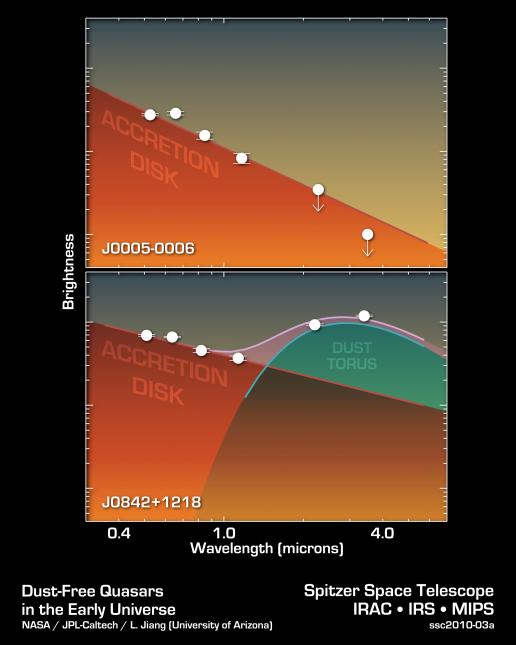
When Jiang and his colleagues set out to observe J0005-0006 and J0303-0019 with Spitzer between 2006 and 2009, their targets didn’t stand out much from the usual quasar bunch. Spitzer measured infrared light from the objects along with 19 others, all belonging to a class of the most distant quasars known. Each quasar is anchored by a supermassive black hole weighing more than 100 million suns.
Of the 21 quasars, J0005-0006 and J0303-0019 lacked characteristic signatures of hot dust, the Spitzer data showed. Spitzer’s infrared sight makes the space telescope ideally suited to detect the warm glow of dust that has been heated by feeding black holes.
“We think these early black holes are forming around the time when the dust was first forming in the universe, less than one billion years after the Big Bang,” said Fan. “The primordial universe did not contain any molecules that could coagulate to form dust. The elements necessary for this process were produced and pumped into the universe later by stars.”
The astronomers also observed that the amount of hot dust in a quasar goes up with the mass of its black hole. As a black hole grows, dust has more time to materialize around it. The black holes at the cores of J0005-0006 and J0303-0019 have the smallest measured masses known in the early universe, indicating they are particularly young, and at a stage when dust has not yet formed around them.
The Spitzer observations were made before the telescope ran out of its liquid coolant in May 2009, beginning its “warm” mission.
Source: JPL
Answer to Universe Puzzle No. 5 Now Posted
I’ve now posted the answer in the original post. Check back next week for another Universe Puzzle!
Where In The Universe #96
It’s time once again for another Where In The Universe Challenge. Test your visual knowledge of the cosmos by naming where in the Universe this image was taken and give yourself extra points if you can name the spacecraft responsible for this picture. Post your guesses in the comments section, and check back on later at this same post to find the answer. This week’s WITU challenge was submitted by UT reader Brad Jones — thanks Brad! To make this challenge fun for everyone, please don’t include links or extensive explanations with your answer. Good luck!
UPDATE: The answer has now been posted below.
This is an image of two galaxies — M81 and M82, and was taken from the ground by Markus Schopfer using an 8-inch SC-Telescope and a Digital SLR. See a larger version here.
M81 is a grand design spiral galaxy and pairs up with an irregular galaxy M82, sometimes called the “exploding Cigar.” They are actually separated by 150,000 light years. This galaxy group is the nearest galaxy group to our own local group of galaxies.
You can read a great post about M81 and M82 by Tammy Plotner here.
Planck Reveals Giant Dust Structures in our Local Neighborhood
Dust has never looked so beautiful! This new image from the Planck spacecraft shows giant filaments of cold dust stretching through our galaxy. The image spans about 50 degrees of the sky, showing our local neighborhood within approximately 500 light-years of the Sun. “What makes these structures have these particular shapes is not well understood,” says Jan Tauber, ESA Project Scientist for Planck. Analyzing these structures could help to determine the forces that shape our galaxy and trigger star formation.
Continue reading “Planck Reveals Giant Dust Structures in our Local Neighborhood”
Beautiful Cosmic Barbeque Pit

NASA’s Wide-field Infrared Survey Explorer, or WISE has been a busy spacecraft since its launch on Dec. 14, 2009. It has found asteroids and comets, and now has found a cosmic barbeque pit. Well, not really, but the green material in the cloud of gas and dust surrounding the Berkeley 59 cluster is from heated polycyclic aromatic hydrocarbons, (PAHs) molecules that can be found on Earth in barbecue pits, exhaust pipes and other places where combustion has occurred. The “coals,” or the glowing red is warm dust heated by hot young stars within the nebula.
Continue reading “Beautiful Cosmic Barbeque Pit”
You Too Can Find Missing Russian Spacecraft
On Monday, NASA released the complete set of science data from the Lunar Reconnaissance Orbiter Camera’s first six months of observations, consisting of more than 100,000 lunar images. Straight away, Phil Stooke from the University of Western Ontario began scanning the images to help find a “missing” Russian rover on the lunar surface, the Lunokhod 2. It didn’t take him long to discover the tracks left by the lunar sampler 37 years ago after it made a 35-kilometer trek. “The tracks were visible at once,” said Stooke.
UPDATE: It turns out the original image that showed what Dr. Stooke thought was the Lunokhod 2 rover’s location was not quite correct. Emily Lakdawalla posted a story about it on The Planetary Society Blog, and so I checked with Stooke. He replied: “After I posted my “discovery” Sasha Basilevsky, a veteran Russian planetary scientist, sent me and Emily an image – the one she put on her blog – which shows the true situation. My dark spot is a dark marking the rover made as it turned in place before heading out on one last short drive. That took it out beyond the edge of my image. That new image shows the rover as a bright spot. Yes, I concur with their interpretation. My spot was made by the rover but it’s not actually the rover itself.”
So, I have updated the image above to show the actual final resting spot. The black arrow shows the spot that Stooke originally thought was the rover, where the white arrow shows the real rover. The smaller white arrows point out the rover’s tracks. (end of update)
And now that the images are readily available for anyone to see, who knows what you can find on the Moon?
Continue reading “You Too Can Find Missing Russian Spacecraft”

